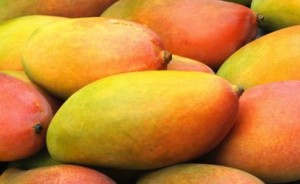|
FDA has not shared the new high-risk status of mangoes with American consumers, but the USDA-sanctioned National Mango Board is getting the word out to mango growers around the world. "As a result, look for longer hold time on fruit going through the process," William Watson, Executive Director for the National Mango Board, said in a letter to the industry. "Unfortunately, these additional inspections are most likely going to be the new norm." Watson encouraged mango growers to "double check your protocols and address any shortcomings immediately." In late August, the Canadian Food Inspection Agency (CFIA) and then FDA discovered Daniella brand mangoes grown in Mexico were likely contaminated with Salmonella. When the problem was detected, Burlingame, CA – based Splendid Products recalled certain lots of the Daniella brand mangoes. FDA's investigation eventually led to recalls by three other mango importers, but those came later on. In the United States, the federal Centers for Disease Control and Prevention (CDC) found that the implicated mangoes were responsible for two distinct outbreaks, one involving Salmonella Braenderup, and another involving Salmonella Worthington. The Salmonella Braenderup outbreak was the larger of the two, sickening 127 people in 15 states. There were no deaths reported, but 33 people involved in this outbreak required hospitalization. The second, smaller outbreak involving Salmonella Worthington consisted of 16 cases. One ill person had both strains of Salmonella and almost 90 percent said they'd consumed mangoes in the previous week. Victims of this outbreak were from similar states and were sickened during similar time periods as those involved in the larger outbreak, and were connected to the event through interviews. Hispanics who purchased mangoes at Hispanic markets accounted for many of the ill, especially in California. One other twist was the Mexican government's refusal to accept what was obvious to the U.S. and Canada. Mexico's National Service of Health, Food Safety, and Quality (SENASICA) insisted there was not enough evidence to conclude that mangoes were the source of the Salmonella. FDA, which was prevented from visiting Agricola Daniella in Sinaloa, Mexico immediately after the recall, did put the mango brand on an Import Alert. The Sept. 12 alert was for "Detention Without Physical Examination Of Raw Fresh Fruits And Vegetables Due To The Presence Of Pathogenic Contamination." U.S. mango imports from Mexico usually pick up product in March, so there is still time to resolve any strain that has developed between the neighboring countries and large trading partners. The Mango Board's Watson says food safety expert Sergio Nieto-Montenegro, a native of Mexico who earned a Ph.D. from The Pennsylvania State University in food science in 2006, will be doing risk assessments both in mango facilities in growing countries and receiving warehouses in the U.S. Watson said Nieto-Montenegro's report along with industry input would be used as a guide for determining the next steps for best food safety protocols for mangoes. Nieto-Montenegro's Texas-based company is called Hispanic Workforce Management, LLC. He has focused on food safety for companies with Hispanic workforces. Watson and Splendid General Manager Larry Nienkerk both spoke at the recent Fresh Summit 2012 event sponsored by the Fresh Produce Association of the Americas. According to The Packer, which covers the produce industry, Watson acknowledged that use of Price Look Up (PLU) codes to identify the recall mango lots turned into " a mess." Neinkerk's peers applauded him for the quick recall action taken by his company. CDC declared the outbreak over on Oct. 11. Six counties supply 99 percent of the mangoes consumed in the U.S. These include Mexico, Peru, Ecuador, Brazil, Guatemala and Haiti. Mexican mangoes dominate the market from March through August. Mangoes now available come from Brazil and Ecuador. © Food Safety NewsMore Headlines from Food Policy & Law |
10.30.2012
After Salmonella Outbreaks, FDA Names Mango a “High Risk” Fruit
Subscribe to:
Post Comments (Atom)

No comments:
Post a Comment